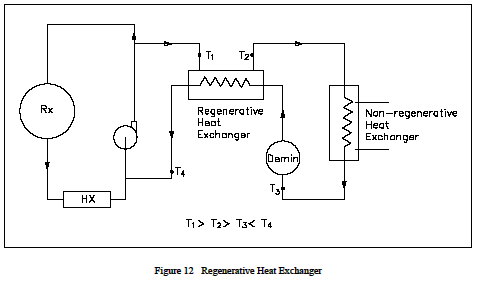Regenerative Heat Exchanger - Heat Transfer
Heat Transfer Engineering | Thermodynamics
A regenerative heat exchanger typically uses the fluid from a different area of the same system for both the hot and cold fluids. An example of both regenerative and non-regenerative heat exchangers working in conjunction is commonly found in the purification system of a reactor facility. The primary coolant to be purified is drawn out of the primary system, passed through a regenerative heat exchanger, non-regenerative heat exchanger, demineralizer, back through the regenerative heat exchanger, and returned to the primary system (Figure 12).
In the regenerative heat exchanger, the water returning to the primary system is pre-heated by objectives. The first is to minimize the thermal stress in the primary system piping due to the cold temperature of the purifiedcoolant being returned to the primary system.
The second is to reduce the temperature of the water entering the purification system prior to reaching the non-regenerative heat exchanger, allowing use of a smaller heat exchanger to achieve the desired temperature for purification. The primary advantage of a regenerative heat exchanger application is conservation of system energy (that is, less loss of system energy due to the cooling of the fluid).
